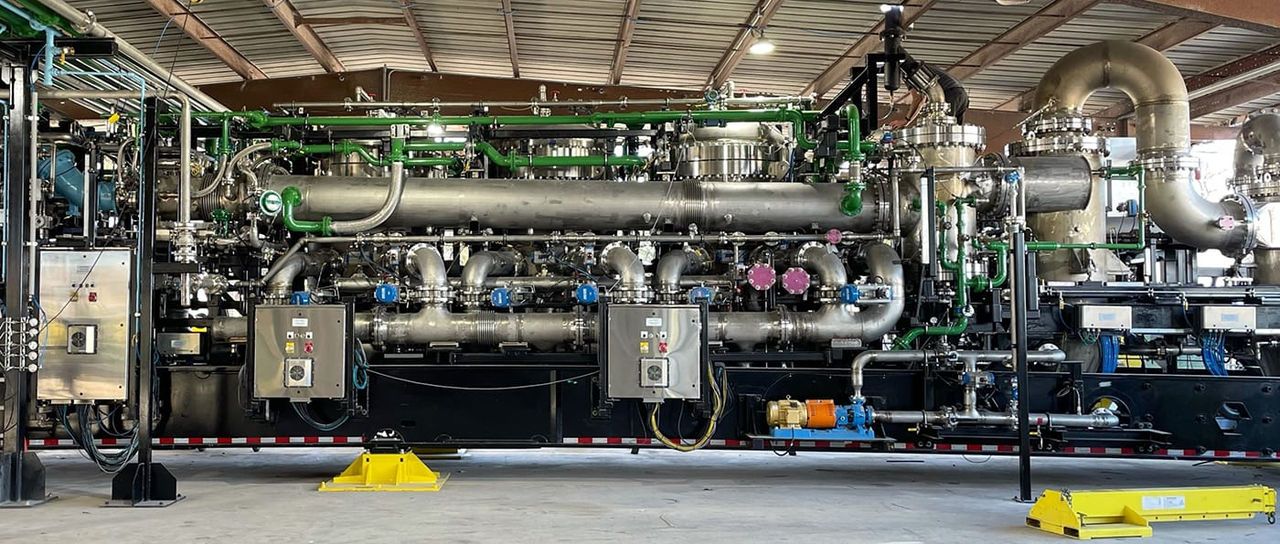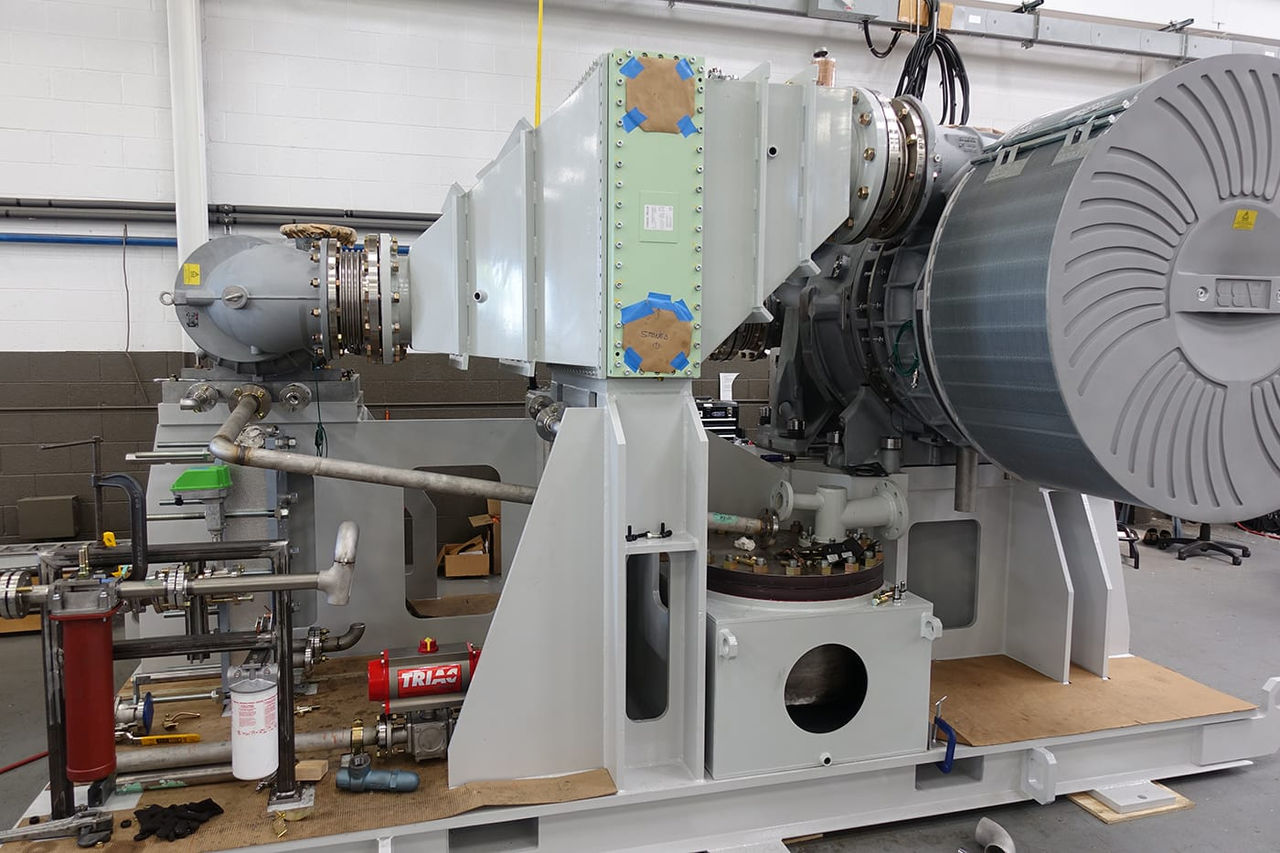US technology company H.E.A.T. creates novel, sustainable solutions for waste and water treatment which avoid the downsides of the traditional processes used in these areas. We’re particularly impressed at the company’s resourcefulness, and it’s certainly a unique use case for forced induction, but Accelleron turbochargers are an essential ingredient for the business.
The business has two main areas of focus. In the area of solid waste management, traditional approaches are wasteful and inefficient, based on incineration and landfill, with neither of these approaches having good outcomes for our planet. H.E.A.T. instead employs plasma torches in an oxygen-starved inductive furnace to reduce any waste matter to its constituent molecules, at temperatures well in excess of 5000-degrees Fahrenheit.
Metals and other reusable materials can be reclaimed; toxic or otherwise dangerous elements are made inert. Then, the two other outputs are a synthetic gas, which can be used as fuel, and an adaptable slag that can be used for building materials and even woven into fabrics. It doesn’t produce anything that needs to go to landfill, and it’s not burning the materials, so it doesn’t produce smoke, two key factors that make the solution better than incineration.

HEAT and water
The other side of the business is focused on water treatment. Clean water is a very pressing, global issue. Even some of the most prosperous areas of the world regularly suffer from water shortages while, in some countries, the only source of drinking water is through desalination plants.
Meanwhile, industrial processes and mining consume millions of gallons of water annually, which ends up undrinkable and potentially dangerous if it finds its way into other water bodies. H.E.A.T.’s CEO, Jason Le Vesconte, says the two sides of the business are actually very similar: “The technology speaks to processing, whether it be liquid waste, or whether it be solid waste, with virtually no residual waste created from it. It's all about converting what we don’t want, returning resources back to the environment in the most responsible manner we can, but also to generate beneficial reuse products and energy from it that make the process economical.”
The company is currently assisting the oil and gas industry close to fracking installations in North East Pennsylvania. Depending on the location, the fracking process might draw up ten barrels of water to the surface for each barrel of oil obtained. And that water is often heavily contaminated with minerals and other unwanted materials.
After treatment of the contaminated water, technology from H.E.A.T., which is called Triton, uses evaporation and, if required, distillation, in combination with pressure and turbulence, to separate H20 from its contaminants, allowing the water to be used as desired, perhaps for agriculture, for example, or simply evaporated into the atmosphere. “We like to describe the technology as nature’s turbocharger,” says Jason, “lending a helping hand to mother nature to responsibly return those resources to the ecosystem.”
A second use case is in desalination – where no existing technology can work with either the levels of salinity or to that capacity that Triton is able to. In areas of the world where desalinisation is a necessity, such as around the Persian Gulf, the sea water is becoming even more salty: excess salt from previous desalination has often been dumped back into the sea, detrimentally effecting the marine life. Before long, the rising salinity will be too concentrated with salt for traditional desalinisation technologies to cope. Triton, however, can cope with extremes of contamination and can be used to make the existing desalination plants more efficient by increasing the overall throughput of useable water by up to 40%.

The turbo advantage
So how do Accelleron turbochargers enter the picture? There are actually no conventional engines within H.E.A.T.’s technology, so this is a unique application. But within the Triton water purification process, cyclones are created within the system, which are used to separate ultra heavy brine production water vapour from the particles within it, much like a modern vacuum cleaner uses cyclones. A direct jet flame is directed to the heart of a hydro cyclone combustion chamber that effects direct heat contact with the vortex of water evaporating it instantaneously in salts and vapor. Dual turbochargers from Accelleron (the Accelleron A175M and P245, set up in a Power2 configuration) are then used to recover the heat from the combustion process to recompress and introduced more air into the system that further amplifies the power available to evaporate even more ultra-heavy brine production water, using it to fuel the ongoing process in an ultra-efficient manner.
Jason says: “Recovering heat is the key aspect. We recover the heat generated on the hot side of a dual-stage high and low pressure turbocharger system, where the high pressure spins up to around about 35,000 RPM. The heat recovered is shared between the two turbos in a very controlled and balanced way using a very sophisticated computer system we built that aligns the performance of the turbos working together. That combination of low pressure and high pressure gives us a level of airflow that you wouldn't be able to approach with any other technology. We calculated the impact as equivalent to several football fields of conventional air compressors and boosters.”
Originally, and perhaps amazingly, the original prototypes for the system ran using regular, off-the-shelf marine turbochargers from Accelleron. However, the highly corrosive salinity to which the process continually exposes the units meant they became worn quickly. Accelleron thus developed custom turbocharger units made with super-stainless steel so they wouldn’t be corroded by the extreme environment within the Triton system. Because the key components are replaceable as a cartridge, maintenance is painless and swift, creating very little disruption to uptime. As Jason comments: “The beauty of the Accelleron turbo system is they’re very modular. The cassette that is the central part of the turbo, the axis and the cold and hot sides of the turbo, are all hooked together in one cartridge that allows rapid removal and replacement of any components. Accelleron’s bearing system is superior to any other turbo.”
The heart of the system
Jason is equally complementary regarding the savings created by the system: “The turbocharger is very much the heart of the system that recovers and regenerates the energy that we've created in the combustion process. Without that, we would be between several multiples less efficient than we are.”
There’s one further aspect to the astonishing potential impact of Triton. Most production water, which is a by-product of the gas or oil that comes up from fracking wells is enriched with valuable minerals, such as Lithium. People knew this. But until now, there was no technology, with the level of volume throughput and the economies of scale, that allowed the mining of that water. Now we have that ability. The Triton unit is able to process such high volumes of water, generating the necessary volumes hence economies of scale which make recovering small concentrations of lithium (around 0.2 kilogrammes per barrel of lithium) economically viable as well as securing a new source of precious metals mining. Since the units each process over 6000 barrels a day, this quickly adds up, and H.E.A.T. estimates it could supply every home in America with one to two EVs using the lithium mined from the water treated within the Marcellus basin. The low and somewhat unstable supply of Lithium is a major source of energy instability. This new route to obtaining it is part of the solution to creating a greener, cleaner future.














